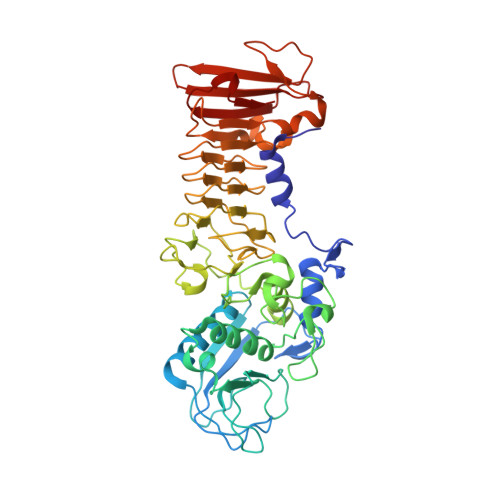Crystal Structure of a Complex between Pseudomonas Aeruginosa Alkaline Protease and its Cognate Inhibitor: Inhibition by a Zinc-NH2 Coordinative Bond
Hege, T., Feltzer, R.E., Gray, R.D., Baumann, U.(2001) J Biological Chem 276: 35087
- PubMed: 11445573
- DOI: https://doi.org/10.1074/jbc.M104020200
- Primary Citation of Related Structures:
1GO7, 1GO8, 1JIW - PubMed Abstract:
Serralysins are a family of metalloproteases secreted by Gram-negative bacteria into the medium in the form of inactive zymogens. Usually, all serralysin secretors have on the same operon a gene coding for a periplasmic 10-kDa protein, which is an inhibitor of the secreted protease. The recent characterization of the inhibitor of the alkaline protease from Pseudomonas aeruginosa revealed a surprisingly low dissociation constant of 4 pm, contrary to earlier studies on homologous systems, where inhibition constants in the microm range were reported. To approach a more accurate understanding, the crystal structure of the complex between inhibitor and protease from P. aeruginosa was determined at 1.74 A resolution and refined to R(free) = 0.204. The structure reported here shows clearly that the N terminus of the inhibitor forms a coordinative bond to the catalytic Zn(2+) ion with a nitrogen-zinc distance of 2.17 A. We conclude that this interaction adds substantially to the complex stability and show also that similar interactions are found in other metzincin-inhibitor complexes.
- Department of Chemistry and Biochemistry, University of Bern, 3012 Bern, Switzerland.
Organizational Affiliation:



















